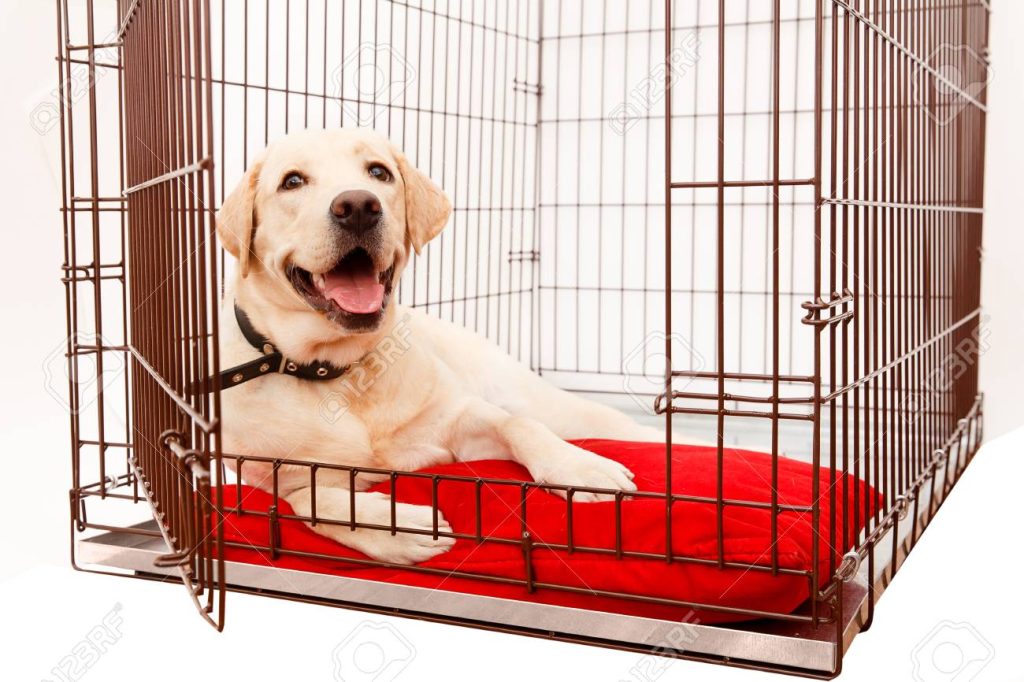A Labrador Retriever dog crate should have three important features: Dimensions, Material, and Lockable Gate. A well-made dog crate is easy to maintain with a damp cloth. Lockable gates help prevent escape. Lastly, choose a crate that is made from durable particleboard. It will keep your dog in its place and help prevent accidents. Buying a crate for a Labrador is a great investment that you and your dog will appreciate for years to come.
Dimensions of dog crate
A Labrador crate must be the correct size for a fully grown male Labrador. This breed can grow up to 24 inches tall, so its length should be at least 42 inches. Labrador crates have a variable height of 30 inches to 40 inches, but they can be smaller. If you want your pup to feel secure and comfortable, consider buying a crate with dividers.
The size of a Labrador crate should be approximately thirty inches by forty-two inches. For easy transport, you can use a collapsible, folding wire crate. Most of these crates include a plastic pan to serve as a floor for the dog. Its sides are also padded, and there is a divider to separate the dog from its kennel mate.
In addition, the height of a Labrador crate should be three to six inches above the dog’s height, but this should not be a concern if the crate is a bit taller than the dog. If the crate is taller than the dog, it will not be a problem, but if it is short, it’s probably better to get a larger size.
When choosing the right crate for your Lab, consider the design. You can choose a standard or customized crate with multiple doors, removable trays, and mesh windows for ventilation. For your convenience, some crates are designed with removable trays for easy cleaning and disposal. Some crates also feature a bed and cover for your dog to sleep in. Some Labrador crates have multiple doors and are made of heavy-duty plastic that resists denting.
Another important consideration is your puppy’s comfort. Some crates come with a comfortable mattress for the pup to sleep on. However, some crates are equipped with a removable plastic tray to allow for easy cleanup. And the size should be portable, since crates may need to be moved. Some crates come with roller feet to make them easier to carry. And, most importantly, the size of a dog crate for Labrador crate is important in training your pup.

When choosing a crate for your new pup, it is important to consider your puppy’s size. A 4 month old puppy reaches full height before reaching its full weight. Therefore, their height and weight should be measured from the tip of their ears. Then, you should add the width of the crate to the length of your pup. This way, the crate will be the perfect fit for your puppy.
Another consideration is comfort. Labrador crates should be 42 inches or 36 inches wide, depending on the breed. If you want your puppy to be comfortable while he sleeps, choose a wood dog crate that matches your decor. And don’t forget about dividers. This will make the training process easier. And, once your pup has learned to pee, you can easily remove the dividers and allow your pup to stretch.
Material of dog crate
There are several factors to consider when choosing a dog crate for your Labrador. One of the most important is the material of the crate. Fabric crates should be made from durable nylon with steel or PVC joints. This is because fabric crates can easily become chewed by your Lab. A sturdy metal or wood crate with a steel or PVC frame is a better choice for traveling and other situations where your Lab may need to sleep inside.
The size of the dog crate is another important factor. Make sure that the crate you purchase fits your Labrador’s size. You may find it useful to have two or more crates in different sizes. The crates you choose should be large enough for your pet to sit comfortably. However, you should avoid getting crates that are too large for travel, as this could cause injury to your pet.
If you are looking for a crate that looks attractive, try to find one made of dark wood. Labradors prefer crates that are dark in color. It’s best to choose one that has a high level of ventilation, so that your pup won’t get overheated. In addition to providing a comfortable resting space, crate training your Labrador is also an excellent way to toilet-train them.
You don’t want to choose a soft-sided crate for your Labrador because it won’t stand up to your dog’s chewing. Alternatively, a steel crate that can be secured with a carabiner will be a better choice for your dog. Make sure you get a reputable brand to ensure that your pup stays safe and sound.
Regardless of which type you choose, there are many different materials to consider when choosing a dog crate for your Labrador. You can choose metal, plastic, or soft-sided crates, but make sure you get one that is sturdy enough to handle your pet’s weight. If you need to travel a lot, you may want to consider a wired crate – they’re not as expensive as metal and are lightweight enough to be easily transported.
The perfect dog crate is easy to clean. Look for one with multiple doors, a heavy bottom tray, and a lockable lid. Double-door crates are best if your Lab has good behavior and won’t escape from the crate. Choose a sturdy one that fits your Labrador’s size and personality. You’ll have no problem training your Lab in a crate if it is comfortable inside.
Consider a portable crate. Petsfit portable crates can be easily folded, making them convenient to carry and store. These crate designs are waterproof, which makes them suitable for transport, camping, or even hotel stays. Some crate types come with divider panels and are waterproof. The Petsfit portable crate is ideal for travel. The divider panel, screw-in design, and welded-in hardware make this crate the perfect choice for traveling.
Feature of dog crate
A crate is an essential piece of dog equipment, especially if you’ve got a Labrador Retriever. The opacity of the dog crate will decrease the stimulation that the dog gets from other stimuli in the house. Some crates are made of PVC, which is more durable than polyester but can be difficult to clean. The size of the crate is about thirty inches long by 42 inches wide, and it has a height matching its width. However, the size of the crate does not offset its disadvantage, since the size is larger than the depth of the dog’s head.
When choosing a dog crate for your Labrador, consider the size of the crate. The size of the crate should be suited for the dog’s age, as well as the location you plan to use it in. Ensure that it’s spacious enough for your dog, and remember that a dog crate with a door is essential. One of the best things about a dog crate for Labrador is its versatility. It can be adapted to accommodate different size Labradors.
A dog crate for Labrador Retrieved should have multiple doors and sturdy zippers. Look for a sturdy one with rounded corners. Those that fold down are also available. Despite their weight, some dogs are mischievous and like to chew on their locks. A heavy dog crate can be a better choice for mischievous Labs. It is also easy to clean and fold down.
Another important feature of a dog crate for Labrador is its size. Labradors can fit in a room nine times larger than their height. Hence, it is vital that you choose the crate that is smaller than your pet’s size. It’s a good idea to buy a crate that has a divider so that your Labrador can feel comfortable and secure.
A Labrador Retriever travel crate will provide a comfortable place for your dog when it wants to nap or sleep. This crate also serves as a toilet training tool, and will help to train your lab to go to the bathroom in the crate. Moreover, it is a great way to keep your lab in order. The crate will prevent your pet from tearing open the wire in the crate and getting injured.
Lastly, the size of the dog crate is an important factor when selecting one. The Labrador’s height should be enough to let him walk into the crate and turn around. If the dog crate is too large, it may cause harm to the pet, which can make it difficult to transport your pet. For this reason, you should check the height of your dog while standing.













